Freshmen have been excluded from these previews, as we'd like to wait and see what they have to offer on the NCAA circuit before we come to any long-term conclusions.
-Top 20 Prospects in the Big Ten
-Top 25 Prospects in the ACC
-Top 15 Prospects in the Big 12
-Top 15 Prospects in the Pac-12
-Top 25 Prospects in the Big East
-Top 15 NBA Prospects in the SEC
-Top NBA Draft Prospects in the Non-BCS Conferences, Part One (#1-5)
-Top NBA Draft Prospects in the Non-BCS Conferences, Part Two (#6-10)
-Top NBA Draft Prospects in the Non-BCS Conferences, Part Three (#11-15)
-Top NBA Draft Prospects in the Non-BCS Conferences, Part Four (#16-20)
#21 Nate Wolters, 6-4, Point Guard, Junior, South Dakota State
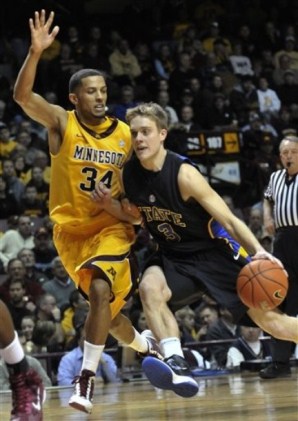
Joey Whelan
Brookings, South Dakota has historically been non-existent on the maps of most NBA scouts, but Nate Wolters may be giving them some reason to change that. The Jackrabbits point guard put together one of the more well-rounded stat-lines in the country last season, posting averages of 19.5 points, 4.6 rebounds and 6.1 assists while shooting nearly 41% from beyond the arc. As a standout at a non-traditional basketball school playing in a small conference like the Summit, however, Wolters has an uphill battle to prove he can play at an elite level of competition.
Physically, Wolters is a mixed bag when projecting him as a pro. At 6-foot-4 he has good size for the point and is solid enough to withstand some contact off the dribble. His length is also a positive, playing a big role in his above average rebounding numbers for his position. From there, however, things tend to tail off to a degree. Wolters isn't always quick enough to consistently beat Summit League defenders off the dribble, let alone NBA caliber players, nor is he a particularly explosive leaper. He is able to create offense thanks to his shiftiness with the ball and ability to change speeds, but how this would translate playing against more physically gifted players is still a question mark.
Based on his physical profile, terrific ball-handling skills and ability to play at different speeds, it should come as no surprise that SDSU utilizes Wolters most frequently in pick-and-roll sets, accounting for 28.1% of his total possessions last season according to Synergy Sports.
He does a tremendous job here of mixing up his scoring with his passing ability, finding players creatively in every way possible, be it bounce passes, post-entries, kick-outs, lobs or drop-offs at the rim. Wolters is indeed one of the best passers in college basketball, ranking 5th amongst all prospects in assists per-40 pace adjusted, and 3rd in Pure Point Ratio. Wolters' unselfishness and excellent basketball IQ are clearly significant reasons his team ranked as the 25th most efficient offense in all of college basketball season.
While Wolters does a tremendous job of creating for his teammates, he isn't quite as effective at creating high percentage shots for himself inside the arc. He rarely is able to fully turn the corner on his opponent, and has a difficult time finishing over length inside the paint. He converted just 46% of his 2-pointers last season, which is not terribly impressive, but was able to compensate for that with his craftiness drawing fouls, getting to the free throw line 7.5 times per-40 minutes pace adjusted. Once there, he converts 80% of his attempts.
When he opts to attack from the outside, Wolters proves to be a dangerous perimeter shooter, connecting on 41% of his three-point attempts last season. He has a quick, fluid release, and is capable of making shots both with his feet set and off the dribble when called upon. Because of how dominant a ball-handler Wolters is forced to be in South Dakota State's offense, he doesn't get many catch and shoot opportunities, but the fact that he can play both on or off the ball is a major plus considering his size.
As one would expect, many of the physical limitations that Wolters deals with offensively, manifest themselves in his defensive game as well. His lack of elite quickness makes it difficult for him to defend opposing players off the dribble. He anticipates well and knows how to play the angles to his benefit, but against quicker guards he simply can't keep up. Wolters does hustle and is a tough player, proving to be an above average rebounder for his position almost purely based on effort and anticipation ability.
It's hard not to be impressed by the numbers that Wolters has produced relatively early in his career, and there's reason to believe they will continue to improve, as his field goal and three-point shooting numbers improved significantly from his freshman to his sophomore seasons. Given his physical limitations, Wolters will need to keep proving himself at the college ranks, showing that he can translate his production against better competition and help his team win games. A NCAA tournament berth could help his cause quite a bit.
#22 Dario Hunt, 6'8, Senior, Power Forward, Nevada
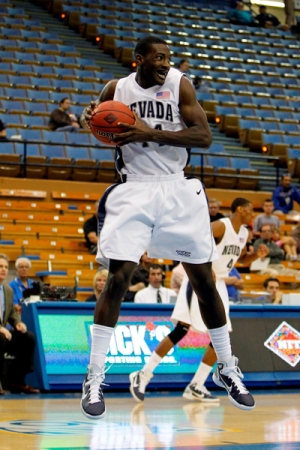
Matt Williams
One of a few Nevada players to make our list of Non-BCS NBA prospects, Dario Hunt is the Wolf Pack's best athlete and primary interior scoring threat. He took a giant step forward as a junior, emerging as a high level defensive presence, a prolific rebounder, and an athletic finisher at the rim. Improving in each of his three seasons in Reno thus far and nearly doubling his scoring rate last season, Hunt is a name to keep an eye on as he aims to continue his development as a senior.
Hunt's best assets as a prospect, and the two things that catch your eye almost immediately when you first watch him, are his exceptional wingspan and tremendous leaping ability. He is a very good overall athlete with a terrific frame that has potential for continued growth. While he may not have great size for a power forward at the next level, he has the athleticism, length and motor scouts like to see out of players in his mold.
Offensively, Hunt is primarily a catch and finish threat at this juncture, though he flashes some skill in the post too and has seen his role on the block expand in recent seasons. He's at his best when his teammates are setting the table for him, and there are a number of different lobs built into Nevada's offense to exploit Hunt's ability to finish plays above the rim. Extremely aggressive when he's crashing the glass as evidenced by the fact that he ranks in the top-10 among all players in our database in offensive rebounds per-game, and quick to fill any opening under the rim, Hunt's activity level makes him an easy target in the paint.
Hunt's ability to produce with his hustle offensively is a key to his potential at the next level, as he's still developing the rest of his offensive arsenal is not a legitimate threat outside of the midrange. The senior took a major step forward last season when he began showing some budding post moves in additional touches down low, gaining a comfort level as a shooter in the midrange, and improving his free throw percentage some 20% to a respectable 70% mark, but still has plenty of room to grow.
Hunt flashes an intriguing turnaround jump shot that he gets phenomenal elevation on turning over his right shoulder, but needs to continue polishing his repertoire and being more assertive offensively. He didn't show ideal footwork last season and is still learning to control his quickness off the dribble, but it is clear that if he develops some pivots and counter-moves in the post or refines his handle, his ability to play above the defense will work to his advantage.
Defensively, Hunt's athleticism allows him to make an impact on the glass, as an on-ball defender, and as a weak-side shot blocker. He has gotten significantly better at not committing ill-timed fouls around the rim over the course of his career, which was something that plagued him as a freshman. The Colorado native is a physical post defender, but does a nice job going straight up on the shot, though he still is a bit too aggressive on occasion. If he can learn to pick and choose his spots a bit better and take fewer risks, he could cut down on his fouls and become a more adept defender away from the basket.
As a weakside shot blocker and rebounder, Hunt's athleticism makes him a significant presence on the court. Though he's blocked fewer shots than he did early in his career, he still adjusts a few each game and has the type of quick leaping ability that can catch offensive players off guard. After a shot goes up, Hunt's instincts take over, as his nose for the ball and ability to pursue the ball help him rebound outside of his area despite his tendency to get out of position at times.
Heading into his final season of eligibility, Dario Hunt may not be a finished product, but he has the energy and athleticism that give him upside as a role-player at the next level. His ability to polish his skill set and produce consistently will dictate how high his stock rises as the season goes on, and is definitely a name worth keeping an eye on along with Nevada's other talented prospects.
#23 Zeke Marshall, 7-0, Junior, Center, Akron
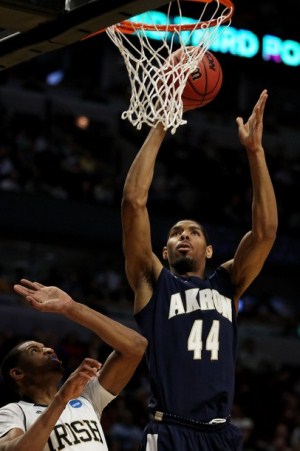
Jonathan Givony
The most highly regarded high school recruit in MAC conference history (ranked in the top-40 by both Scout and Rivals.com), Zeke Marshall has mostly struggled to live up to the expectations he created early on in his career thus far.
Having elected to attend Akron mostly on the strength of their computer information systems department, Marshall played two somewhat inconspicuous seasons thus far, but showed signs indicating he could be on the verge of a breakout junior campaign.
His team went just 9-7 in the MAC last year, but managed to steal the automatic NCAA bid by winning 4 conference tournament games in 5 days, with Marshall being named the MVP after posting 9 points, 9 blocks and 13 rebounds in the final.
The main intrigue surrounding Marshall continue to revolve around his phenomenal physical tools and shot-blocking instincts, standing around 7-feet with an incredible 7-5 wingspan. His frame remains very narrow, particularly in the lower body, but he's a very good athlete for his size, running the court well when motivated and getting off the floor with ease.
Neither a prolific or efficient scorer at the mid-major level, it's difficult to see Marshall ever emerging as anything more than a complimentary player at best on the offensive end of the floor. Akron tries to post him up quite a bit against the slew of undersized big men he faces in the MAC, but rarely sees much success in doing so.
Marshall struggles to establish deep post position due to his poor lower body strength, and doesn't appear to possess the toughness or desire to assert himself in the paint, typically avoiding contact at all costs. Not a particularly fluid player, he shows little in the ways of footwork or post moves, usually preferring to settle for very low percentage hook shots from 12-15 feet.
Thanks to his good hands, long arms and quick bounce, Marshall is a very good finisher when his guards are able to create easy scoring opportunities around the basket. He gets to the free throw line at an average rate (5.1 times per-40 minutes pace adjusted), but converts just 58% of his attempts once there.
Facing the basket, Marshall is somewhat of a mixed bag. He made just 5 of the 22 jumpers (23%) he attempted last season according to Synergy Sports Technology, but shows decent mechanics that indicate he could (and will likely need to) develop this part of his game down the road.
Defensively, Marshall has both extreme strengths and weaknesses. His terrific combination of size, length, timing and mobility make him one of the best shot-blockers in all of college basketball, ranking third amongst all prospects in that category last year.
On the other hand, Marshall also ranks as one of the worst defensive rebounders amongst center prospects, pulling down a mediocre 5.5 per-40 minutes pace adjusted. His lack of strength and aversion to contact is very evident in this area, as he's regularly backed down and pushed out of position and doesn't show much interest in fighting back.
He's also very foul prone, committing 5.9 fouls per-40 minutes pace adjusted, one of the reasons he played just 22 minutes per game last year.
When forced to step outside of the paint, Marshall is mostly a liability. He has a difficult time bending his knees and getting into a real defensive stance, struggling to move laterally and stay in front of anyone. He's not a terribly coordinated athlete at this stage, as it often looks like the game is moving very fast for him.
Marshall is a late bloomer who is just starting to tap into his upside as a basketball player. People around him describe him in various ways. A "different kid", my 7-foot computer nerd", he doesn't have a mean bone in his body," are some of the things his coach has been quoted saying about him.
Watching him on the court, it at times appears that he'd rather be somewhere else, as he gets down on himself very easily, and appears to struggle with self-confidence issues. There are major question marks about his physical and mental toughness, which he'll have to address if he's to convince scouts that he's serious about playing in the NBA. Thus far, his progress has been somewhat disappointing, as he hasn't shown a great deal of improvement in his skill-level or frame since arriving at Akron.
NBA teams have shown at times that they are willing to be patient with players in his moldsuch as Ryan Hollins for example. Marshall has two more seasons at Akron to show that he's a project worth investing in, so it will be interesting to see how he responds.
#24 C.J. McCollum, 6'2, Junior, Shooting Guard, Lehigh
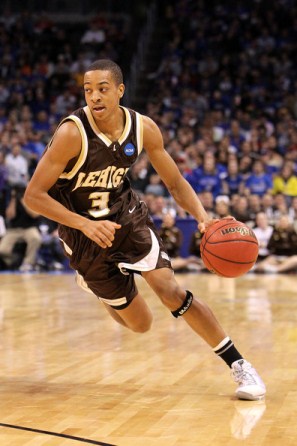
Jeff Rush
C.J. McCollum had one of the best freshman seasons in the history of the Patriot League, leading all freshmen nationally in scoring, winning conference Rookie of the Year and Player of the Year awards, and taking his team to the NCAA tournament. As a sophomore he again led his class nationally in scoring, but both his team and his game seemed to regress. He is still one of the most prolific scorers in the nation, but needs to regain the efficiency he showed during his freshman season to continue to hold the attention of NBA scouts.
McCollum is a natural born scorer who can fill it up in every different way at the college level, and is capable of getting hot and hitting incredibly difficult shots from all over the floor. Undersized for a shooting guard at 6-2 or 6-3, he is not a great athlete by NBA standards, although he shows good length, fluidity and quickness. With that said, he does not have the explosive leaping ability needed to compensate for his lack of size and finish over taller defenders.
Another concern is his lack of strength, as he is listed at just 165 pounds, sports a very skinny frame, and does not seem to have put on a significant amount of weight in his first year in college, which makes it difficult for him to finish at the rim while taking contact. For him to reach his full potential, McCollum must maximize his physical tools in order to take full advantage of his skill set.
Since the first moment he stepped on the court for Lehigh McCollum has been the focal point of Lehigh's offense, and he does a tremendous job of changing pace to create space in order to get his shot off against defenses designed to stop him. He has a solid handle and does a very good job of shooting the ball off of the dribble using a variety of step back moves as well as his quick release to create looks for himself. However, it was clear that being forced to take and make difficult jump shots had a major effect on McCollum's efficiency in his sophomore year, while his current role raises questions about his position at the next level.
One of the reasons that McCollum was so effective as a freshman was his ability to knock down shots from behind the arc, converting 42% of his 3-point attempts. That rate dropped by nearly 11% as a sophomore as he was forced to take much tougher shots in the half court, something that's more difficult for him at his size.
Inside the arc, McCollum's efficiency dropped off as well, with his 2-point percentages going from 48% to 43% as a sophomore. He has a difficult time finishing over length around the basket, making him very reliant on his mid-range pull-up jumper when creating his own offense. This is a shot that will never be a high percentage opportunity in the college game, regardless of how talented a scorer he is.
McCollum compensated for his struggles in the half court somewhat by getting out into transition and getting to the free throw line at a slight better rate. He shot 8.0 free throw attempts per-40 pace adjusted and made 84.5% of his attempts.
The most unique part of McCollum's game is his ability to rebound the ball, his 8.3 rebound per-40 pace adjusted ranked second nationally amongst shooting guards in our database, with him being the only guard in the top 5 that is listed at 6'2 or shorter. He does most of his rebounding on the defensive end, where he likes to push the ball up the floor quickly and create opportunities in the open court.
McCollum is not a great defender, preferring to gamble in the passing lanes using his long arms to create turnovers and ignite Lehigh's fast break. He ranks is in the top 5 nationally in steals per-40 pace adjusted according to our database, which helps to cover for some of his deficiencies in guarding the ball at this level.
As an undersized shooting guard from a non-BCS conference who is not asked to run the point often, McCollum is already at somewhat of a disadvantage as a NBA prospect. He does have a pretty good feel for the game, but is more comfortable making plays for himself than getting good shots for his teammates. McCollum is likely too small to play shooting guard in the NBA, so he's going to have to develop his playmaking ability somewhat. It is also imperative that he gets stronger in the next couple of years in order to be more effective playing through contact and finishing at the rim. He does a good job of getting to the basket using guile and aggressiveness, but he needs to do a better job of completing the play once he gets there.
McCollum hasn't fared terribly well outside of the Patriot conference in his first two seasons statistically, something he'll have to do a better job with if he's to convince scouts that he can make the transition from low-major scorer to NBA combo guard. He will have to greatly improve on these numbers and he will have opportunities against St. Johns, Iowa State, Fordham, and Michigan State to show that he has the ability to play well against bigger and longer athletes in his junior year.
#25 Kevin Foster, 6'2, Shooting Guard, Santa Clara, Redshirt Junior
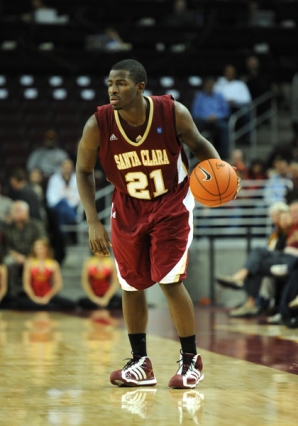
Joey Whelan
Kevin Foster proved to be one of the most prolific shooters in the NCAA last year, leading the country in both 3-pointers made and attempted. The Texas native's resume already includes Freshman All-American, First-Team All-WCC and CIT Most Valuable Player honors. All of this just sets the bar higher as the Broncos enter the 2011-12 season.
Physically, Foster has the size of a point guard, though he is very much a shoot-first player. While his height might be somewhat of a drawback at the next level, he makes up for it in other ways. The junior has a good wingspan for his size and is very solidly built at nearly 220 pounds, resembling a running back more than he does a basketball player. Foster has decent open floor speed, but he can't be described as anything more than an average athlete at best by NBA standards.
If you had never seen Foster play before, simply watching a few minutes of tape would tell you most of what you need to know: he's a gunner. According to Synergy Sports, 84% of his shots last season were classified as jumpers and 64% of all his field goal attempts were three-pointers (he attempted an outrageous 10 per game last year).
His release is pretty fluid, though his elbow flairs out on occasion, but this is due more to his tendency to rush as opposed to a true mechanical problem with his shot. When able to set his feet, Foster is deadly, connecting on 44% of all catch and shoot opportunities. When shooting off the dribble however, this mark plummets to just 29%. Unfortunately he attempted more jumpers off the dribble than with his feet set, which begins to explain why he was such an inefficient scorer last season, making just 39% of his overall field goal attempts and 37% of his 3s.
Foster averaged 18.9 field goal shots attempts per-40 minutes pace adjusted last season, which ranks tops amongst all returning prospects in college basketball. Needless to say based on his shooting percentages and team record (19-14 regular season, 8-6 in the WCC) his shot selection can be downright atrocious at times. It isn't unusual to see him pull up a good three or four feet behind the arc in transition for a contested three, even very early on in the shot clock. When not rushed, Foster is actually a good shooter off the dribble, able to elevate and fire when attacking off of screens; he just needs to do a better job of picking his spots. Santa Clara recognizes this and is constantly screening his defender, with pick-and-roll sets and shots off screens accounting for 42% of the junior's possessions last season.
When Foster opts to attack the basket which happens more often than your typical spot-up shooter he sees mostly mixed results. His lack of athleticism, average ball-handling skills and poor decision making all work against him. He has a difficult time creating high percentage opportunities for himself at his size, the reason he converts a paltry 42% of his 2-point attempts and turns the ball over at a fairly high rate.
Defensively, Foster has his struggles as well, largely due to his lack of size and the huge offensive load he shoulders for Santa Clara. He doesn't contest jumpers aggressively and often gets lost on the perimeter chasing his man. He doesn't have particularly good lateral quickness and his footwork is suspect at this point. Foster's strength helps him though as he is able to body up smaller guards and muscle them off their line of attack. Still, he has significant work to do here considering the significant rise in competition he'll encounter outside of the WCC.
Overall, Foster has his work cut out for him if he's to make an NBA roster. Undersized scorers and gunners like him have made it in the NBA, but that usually hinges on their ability to adjust to a more limited role. The good news is Foster likely has two more full collegiate seasons to refine his shot selection, improve as a facilitator and make strides as a defenderthings he'll have to do in order to give himself a fighting chance.













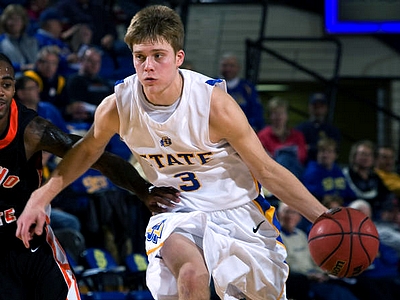



















Comments